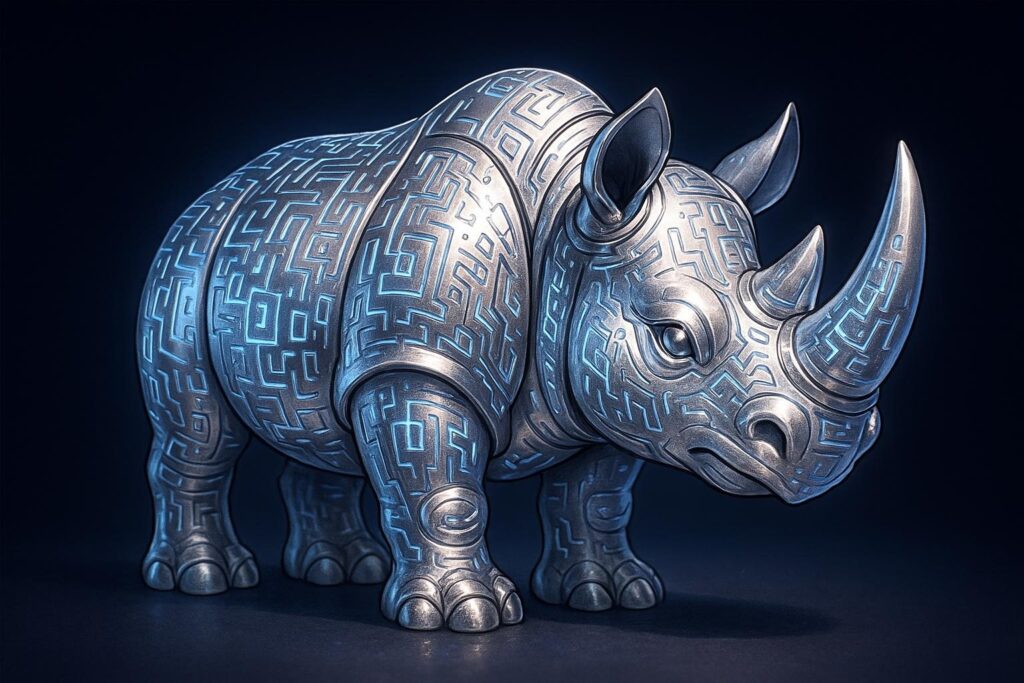Albrecht Dürer’s iconic 1515 artwork “The Rhinoceros” has been reinterpreted as a set of 11 sterling silver sculptures by Asprey Studio, each of which will be sold alongside a digital inscription on the Bitcoin blockchain. Produced by Asprey Studio in partnership with the British Museum, which holds Dürer’s original preparatory sketch for the woodcut, the sculptures are accompanied by a “a parent/child inscription that prevents any further additions and serves as a modern family tree of provenance,” according to a press release shared with Decrypt.
Born in 1471, Albrecht Dürer was one of the pioneers of the German Renaissance, combining the emerging technology of printmaking with new discoveries in optics and anatomy to produce revolutionary works. Dürer’s seminal “Rhinoceros” print was completed without the artist actually having seen a live rhino, instead basing his work on a description from a Portuguese merchant’s newsletter.
In one memorable screed, Dürer railed against printmakers who made unauthorized copies of his work, accusing the “pilferers of other men’s brains” of laying their “thievish hands upon my works. Not only will your goods be confiscated,” Dürer warned the Renaissance IP thieves, “but your bodies also placed in mortal danger.” Dürer, Walker suggested, would be right at home in the modern art world, where digital artists use NFTs to establish provenance, and wrestle with the implications of AI on copyrighted works. “It’s fascinating,” he said, “and it kind of fits in with the whole digital inscription idea.”
Walker was at pains to stress that “Dürer’s drawing does not suddenly become an NFT just because it’s on the blockchain,” noting that, “We’re creating a whole new interpretation of the piece, and the original Dürer drawing of ‘The Rhinoceros’ is actually owned by the museum.” “It’s slightly different dynamics,” he said. “Digital art is the thing, and it’s basically just preserving the piece on the blockchain so it will last forever.”
- Pudgy Penguins Release Massive $1.5 Billion PENGU Airdrop on Solana
- Avalanche Hoops Game ‘Rumble Kong League’ Nets Gatorade Deal
- NFT Sales Spike to $155M, Pudgy Penguins Push Back with an 82% Surge
- Wallet Associated With BlackRock’s New Fund Receives Memecoins and NFTs
- Bitcoin Ordinals Buzz Pushes NodeMonkes Market Cap Above Bored Ape NFTs
- Meebits Ethereum NFT IP Sold as New Owner Reveals Bits Rewards






